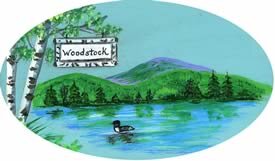Town of Woodstock, Maine
Home of the last hand crank phone system.
Our Beginning
The Town of Woodstock was first known as Plantation Three. In the spring of 1797, a surveyor for Buckfield, Maine, laid out ten lots of one hundred acres each, five on each side of the new road (now known as Old County Road). These lots were known as the “Thousand Acre Sqaudron”, laid out for a family of Bryants in Paris.
In 1808, soon after the Bryants settled here, a small village of Stephens’ Mills sprang up below the Thousand Acres. The village began to decline when the road, now Route 26, was built through the southern part of the town and the post office was moved to Andrews’ Mills, or South Woodstock.
A petition was sent to the General Court of Boston, Massachusetts to become incorporated as a town, and was dated on the last Wed of May, 1814. They requested that Plantation Number Three, may be incorporated into a town by the name of Sparta.
The petition was signed by the Governor of the Commonwealth of Massachusetts on February 7, 1815 and read “an act to establish the Town of Woodstock”. It is not known why “Woodstock” was chosen.
March 20, 1815 was the first annual town meeting for the Town of Woodstock.
In 1820, Rowse Bisbee came from Stephens’ Mills to what is now Pinhook or North Woodstock.
After the Atlantic and St. Lawrence passenger train came through on March 10, 1851, many moved their homes to the future village. Bryant Pond Village was the last section of the town to be settled.
A beautiful rainbow surrounding the Town Complex. Photograph courtesy of Liz Hatch.
From swimming and boating, to hiking and snowshoeing, Woodstock is an outdoorsmans paradise!
Lapham Ledge in winter.




